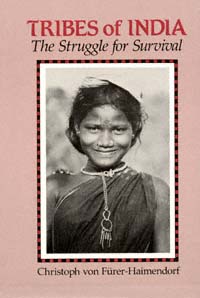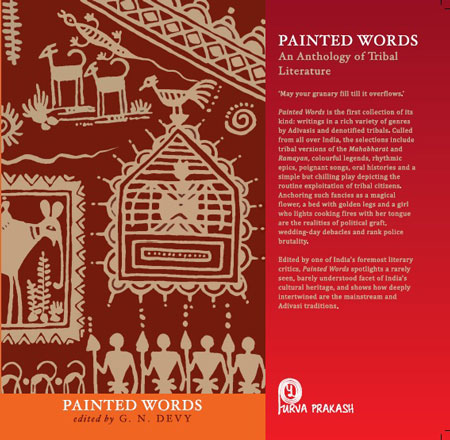
University of California >>
Free eBook (PDF) >>
Summary & Contents >>
Indians are truly rooted in an ethos of living in harmony with their land. There was a time when the Indian subcontinent was carpeted in green… watered by glacial rivers, blessed by rolling hills and productive grasslands, lush rainforests and wave-kissed mangroves. All creatures, great and small, found niches here and thrived. Varied cultures were spawned and people in awe of nature lived by its rules. This happy situation has changed. The wondrous green has long-disappeared – plundered and looted first by invaders and colonists and then by those who took freedom as license to outdo the colonisers in the plunder of natural India. Today what little remains is being systematically eroded by a population caught in the crossroads of a development paradigm borrowed from the industrial North that systematically devastated colonies for centuries.
Source: Lakshmy Raman and Bittu Sahgal in “Daft National Policy 2018” (Sanctuary Nature Foundation)
URL: https://sanctuarynaturefoundation.org/article/daft-national-policy-2018
Date visited: 2 February 2021
The establishment of vast industrial enterprises in tribal zones lends urgency to the extension of protective measures to all tribals whose rights and way of life have been placed in jeopardy. The framers of the Indian Constitution were clear that while the Scheduled Tribes were to be brought out from their age-old isolation, they should be saved from exploitation and from the erosion of their rights to their ancestral land. This aim can be achieved only by special legislation, and the Scheduled Areas and Scheduled Tribes Commission ended its long report with the plea to ‘secure the advancement of the tribals without disturbing the essential harmony of their life and secure their integration without imposition’ (p. 499). The manner of integration of the tribals within the wider Indian society will ultimately depend on political decisions and these will be made on the basis of moral evaluations. Unless the advanced sections of the Indian population develop a spirit of cultural tolerance and an appreciation of tribal values, even the most elaborate schemes for the economic settlement of the tribals are Iikely to prove abortive. It is for this reason that the late Jawaharlal Nehru formulated the following five principles for the policy to be pursued vis-a-vis the tribals:
(1) People should develop along the lines of their own genius, and the imposition of alien values should be avoided.
(2) Tribal rights in land and forest should be respected.
(3) Teams of tribals should be trained in the work of administration and development.
(4) Tribal areas should not be overadministered or overwhelmed with a multiplicity of schemes.
(5) Results should be judged not by statistics or the amount of money spent, but by the human character that is evolved.
Except in a few areas, such as N.E.F.A., these principles have seldom been put fully into practice. There are, moreover, indications that Nehru’s extremely liberal ideas regarding the rights of the tribals and the preservation of their cultural heritage may not be sharecl by an of the present leaders of the Congress Party, and it is likely that pressure for a speedier and mere complete assimilation of the aboriginals will gradually increase and lead to changes even in tribal areas such as N.E.F.A. The existence of a number of special agencies responsible for the protection of tribal rights, on the other hand, justifies the expectation that despite occasional attacks on these rights the tribals will continue to enjoy at least some of the privileges provided far them by the Indian Constitution.
Bibliography
Jawaharlal Nehru, ‘The Right Approach to Tribal People’, Indian Journal of Social Work, Vol. XIV, 1953-4, pp. 231-5.
––‘Tribal Folk’, in The Adivasis, Delhi, Publications Division, Ministry of Information and Broadcasting, Government of India, 1955, pp. 1-8.
Report of the Scheduled Areas and Scheduled Tribes Commission 1960-1961 (Chairman U.N Dhebar), New Delhi, Manager of Publications, Vols. I and II, 1961.
Source: Christoph von Fürer-Haimendorf in India and Ceylon: Unity and Diversity. A Symposium. Edited by Philip Mason, Director, Institute of Race Relations, London. Published for the Institute of Race Relations. Oxford University Press, London 1967, pp. 216-7
[Bold typeface added above for emphasis]
Research the above issues with the help of Shodhganga: A reservoir of theses from universities all over India, made available under Open Access >>

“Is it eccentric to live in beautiful scenery in the hills among some of the most charming people in the country, even though they may be ignorant and poor?” – Verrier Elwin quoted by G.N. Devy in The Oxford India Elwin >>
Find publications by reputed authors (add “open access” for freely downloadable content)
PDF-repository: texts quoted & further reference (Google Drive) >>
Tips for using interactive maps
Toggle to normal view (from reader view) should the interactive map not be displayed by your tablet, smartphone or pc browser
For details and hyperlinks click on the rectangular button (left on the map’s header)
Scroll and click on one of the markers for information of special interest
Explore India’s tribal cultural heritage with the help of another interactive map >>
See also
Adverse inclusion | Casteism | Rural poverty
Demographic Status of Scheduled Tribe Population of India (Census figures 2011)
Fact checking | Figures, census and other statistics
Human Rights Commission (posts) | www.nhrc.nic.in (Government of India)
Search tips | Names of tribal communities, regions and states of India
“What is the Forest Rights Act about?” – Campaign for Survival and Dignity
“Who are Scheduled Tribes?” – Government of India (National Commission for Scheduled Tribes, NCST)

Tribal Literature by G.N. Devy >>
Free eBooks & Magazine: Adivasi literature and languages >>
“India, a union of states, is a Sovereign, Secular, Democratic Republic with a Parliamentary system of Government. The President is the constitutional head of Executive of the Union. In the states, the Governor, as the representative of the President, is the head of Executive. The system of government in states closely resembles that of the Union. There are 28 states and 8 Union territories in the country. Union Territories are administered by the President through an Administrator appointed by him/her. From the largest to the smallest, each State/UT of India has a unique demography, history and culture, dress, festivals, language etc. This section introduces you to the various States/UTs in the Country and urges you to explore their magnificent uniqueness…” – KnowIndia (Government), States and Union Territories (Visited: 2 September 2023)
Learn more about India’s 28 States and 8 Union Territories – From Andhra Pradesh to West Bengal | Nutrition >>